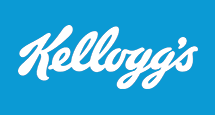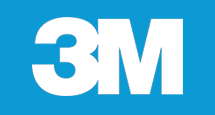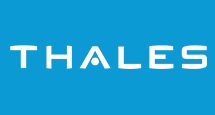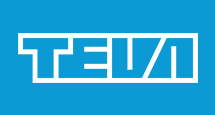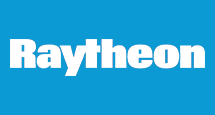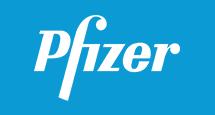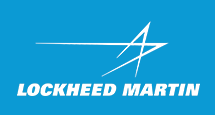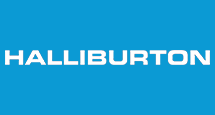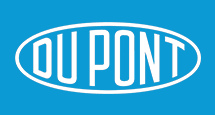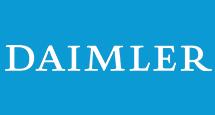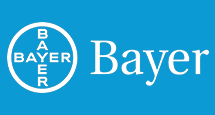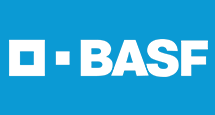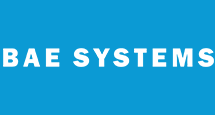Visiongain Publishes Macular Degeneration (AMD) and Other Retinal Diseases Drugs Market Report 2023-2033
10 October 2023
Visiongain has published a new report: Macular Degeneration (AMD) and Other Retinal Diseases Drugs Market Report 2023-2033: Forecasts by Disease Indication (AMD, Diabetic Macular Edema, Diabetic Retinopathy, Retinal Vein Occlusion, Others), by Route of Administration (Parenteral, Topical), by Distribution Channel (Hospital Pharmacies, Retail Pharmacy, E-commerce Pharmacies), by Brand (Lucentis, Eylea, Avastin, Beovu, Vabysmo, Ozurdex, Others) AND Regional and Leading National Market Analysis PLUS Analysis of Leading Companies AND COVID-19 Impact and Recovery Pattern Analysis.
The global Macular degeneration (AMD) and other retinal diseases drugs market is valued at US$15.6 billion in 2023 and is projected to grow at a CAGR of 7.4% during the forecast period 2023-2033.
The intricate and multifaceted characteristics involved in creating successful treatments for AMD and retinal diseases emphasize the need for a collaborative strategy. Collaboration among research institutions, pharmaceutical companies, healthcare providers, and advocacy organizations allows for a synergistic integration of skills, resources, and knowledge. These collaborative efforts promote joint research initiatives, which contribute to uncovering novel therapies and medications for AMD and various retinal conditions. By combining forces, we enhance the effectiveness of clinical trials through the amalgamation of diverse patient groups and resources, ultimately expediting the development process and enhancing overall trial results. Additionally, partnerships with regulatory bodies assist in navigating complex approval processes and ensuring compliance with rigorous regulations.
The growing inclination toward collaboration and forming partnerships within this field presents numerous advantages. To begin with, it encourages the sharing of expertise and optimal methodologies, facilitating a mutual learning experience for stakeholders and minimizing duplicated endeavours. Furthermore, these partnerships facilitate the exchange of data, a critical factor in improving drug formulation processes.
On April 30th 2023, Astellas Pharma Inc. and Iveric Bio, Inc. finalized an official agreement. As per this agreement, Astellas intends to purchase the entire outstanding shares of Iveric Bio at a price of US$40.0 per share in cash, amounting to a total equity value of around US$5.9 billion. This acquisition is facilitated through Berry Merger Sub, Inc., a wholly-owned Astellas subsidiary under Astellas US Holding, Inc. Post-acquisition, Iveric Bio will transition into a subsidiary of Astellas, held indirectly. Iveric Bio is a company with exceptional expertise in the R&D of innovative therapeutics in the ophthalmology field and has promising programs including Avacincaptad Pegol (“ACP”), an important program for Geographic Atrophy (“GA”) secondary to Age-Related Macular Degeneration (“AMD”), and capabilities across the entire value chain in the ophthalmology field.
Collectively, the market stands to gain a substantial opportunity through the key strategic alliances among providers of macular degeneration (AMD) and other retinal diseases drugs market.
How has COVID-19 had a Significant Impact on the Macular degeneration (AMD) and Other Retinal Diseases Drugs Market?
The market for drugs targeting macular degeneration (AMD) and other retinal diseases was notably impacted by the emergence of the COVID-19 pandemic. The global outbreak of the virus caused substantial disruptions in clinical trial operations on a worldwide scale, resulting in delays, halts, and alterations in protocols. These unforeseen challenges had a profound influence on the overall landscape of drugs designed for macular degeneration (AMD) and other retinal diseases.
Throughout the pandemic, numerous trials were postponed or encountered obstacles in enrolment due to lockdown mandates, restricted travel, and overwhelmed healthcare infrastructures. The focus on COVID-19 research diverted resources and attention away from trials unrelated to the pandemic. Consequently, the market for drugs addressing macular degeneration (AMD) and other retinal diseases experienced a downturn in demand and revenue during this crisis.
Nonetheless, the pandemic instigated a shift towards teleophthalmology and remote consultations, resulting in an increased utilization of online platforms for prescription renewals and consultations. This transition helped alleviate the reduction in patient visits, partially sustaining the demand for specific drugs targeting macular degeneration (AMD) and other retinal diseases.
How will this Report Benefit you?
Visiongain’s 284-page report provides 115 tables, 151 charts/graphs. Our new study is suitable for anyone requiring commercial, in-depth analyses for the global macular degeneration (AMD) and other retinal diseases drugs market, along with detailed segment analysis in the market. Our new study will help you evaluate the overall global and regional market for macular degeneration (AMD) and other retinal diseases drugs market. Get financial analysis of the overall market and different segments including service, phase and sponsor, and capture higher market share. We believe that there are strong opportunities in this fast-growing macular degeneration (AMD) and other retinal diseases drugs market. See how to use the existing and upcoming opportunities in this market to gain revenue benefits in the near future. Moreover, the report will help you to improve your strategic decision-making, allowing you to frame growth strategies, reinforce the analysis of other market players, and maximise the productivity of the company.
What are the Current Market Drivers?
Rise in Incidence of Retinal Disorders Anticipated to Spur Industry Growth
The surge in the occurrence of retinal disorders, notably age-related macular degeneration (AMD), significantly drives the market for drugs catering to various retinal diseases. This rise in prevalence can be attributed to multiple factors. Firstly, a prominent contributor is the aging global population, as AMD is more prevalent among older individuals. Furthermore, the increasing prevalence of lifestyle-related health issues, such as diabetes and obesity, known risk factors for retinal disorders, is a notable factor. According to NCBI, around 30.2 to 40.2 million people in Europe suffer from early AMD and around 3.9 to 4.8 million from late AMD by 2040. AMD represents 'the primary cause of visual deficiency in industrialised countries', according to the WHO.
Moreover, increased exposure to risk factors like prolonged screen time due to the widespread use of digital devices, unhealthy dietary patterns, and limited physical activity, has contributed to the upward trend in retinal disorders. These contemporary lifestyle habits play a significant role in the onset and progression of retinal conditions. Focusing specifically on AMD, a major subtype of retinal disorders, its prevalence is climbing due to the aging population. With a growing number of individuals living longer, the cases of AMD are anticipated to rise, creating an expanding market for drugs targeting prevention, management, or treatment of AMD and related retinal diseases.
In response to this escalating incidence, research and development endeavors have invested in innovative therapies and drugs aimed at AMD and other retinal disorders. Ongoing clinical trials and advancements in medical technologies underscore the commitment to addressing this pressing healthcare issue. In conclusion, the escalating incidence of retinal disorders, especially AMD, plays a vital role in driving the growth of the market for drugs addressing retinal diseases. Meeting this demand with effective and innovative treatments is crucial for enhancing the quality of life for affected individuals and addressing the needs of a growing patient population.
Upsurge in Geriatric Population Projected to Boost Industry Growth
The increasing number of elderly individuals plays a significant role in driving the market for macular degeneration (AMD) and other retinal diseases. With the global population aging, there is a noticeable rise in the occurrence of age-related eye ailments, particularly AMD and other retinal conditions. Aging stands as a key risk element for AMD, and the older demographic is more prone to developing retinal issues. In the United States alone, there are as many as 11 million people who have age-related macular degeneration (AMD). For older Americans (starting at age 60), this is the leading reason for vision loss. As the population of older Americans increases, it is expected that the number of people with AMD will increase as age is the primary risk factor. This surge in the elderly population amplifies the demand for efficient treatments and therapies for managing macular degeneration and other retinal disorders. Both healthcare systems and pharmaceutical firms find themselves compelled to concentrate on extensive research, development, and groundbreaking approaches in drugs and interventions to meet the specific necessities of this expanding demographic.
Moreover, this shift in demographics drives progress within the ophthalmic sector. Advancements in technology concerning the diagnosis, treatment, and control of AMD and retinal diseases become imperative to cater to the needs of the aging population. Pharmaceutical enterprises are showing a proclivity for investing in research aimed at discovering novel drugs, precise therapies, and sophisticated treatment methods that can adeptly handle and alleviate the repercussions of AMD and other retinal ailments in the elderly. Essentially, the increase in the elderly population acts as a stimulant, redirecting the focus of the pharmaceutical and healthcare industry towards crafting specialized treatments and interventions for AMD and other retinal diseases. It underscores the necessity for a holistic approach encompassing early detection, effective treatment, educating patients, and providing accessible healthcare services to handle these conditions and enhance the elderly population's quality of life.
Where are the Market Opportunities?
Age-related macular degeneration (AMD) stands as a primary cause of visual impairment among individuals aged 55 and older in Western countries. Its prevalence escalates with age, starting at approximately 2% of the population at age 40 and surging to 25% at age 80. Dry AMD, a prevalent variant of age-related macular degeneration, is characterized by the gradual degeneration of the macula, resulting in impaired vision and potential blindness. Recognizing the potential within this specific health concern is vital as it continues to grow in significance.
A notable opportunity exists in the advancement of innovative therapeutic approaches targeting Dry AMD. Presently, available treatments mainly revolve around managing symptoms rather than addressing the underlying disease causes. This underscores the urgency for concerted research and development endeavours directed toward treatments that modify the disease, halting or potentially reversing the progression of Dry AMD. Pharmaceutical firms and research institutions are actively involved in pioneering strategies such as gene therapies, regenerative medicine, and the exploration of new drug candidates to specifically target Dry AMD. This ongoing innovation is creating a rapidly expanding market segment within the broader realm of retinal diseases.
A significant prospect lies in the advancement of novel therapeutic approaches for treating Dry AMD. Present treatments primarily concentrate on managing symptoms rather than tackling the fundamental causes of the ailment. This emphasizes the necessity for research and development endeavours aimed at creating treatments that modify the disease's progression, potentially halting or reversing it. Pharmaceutical firms and research institutions are actively involved in pioneering strategies like gene therapies, regenerative medicine, and innovative drug candidates to target Dry AMD, thereby fostering a growing market within the broader sector of retinal diseases.
Dry AMD, a common manifestation of age-related macular degeneration, is characterized by a gradual degeneration of the macula, resulting in vision impairment and potential blindness. AMD is a prevalent cause of visual impairment in individuals aged 55 and older in western countries. Its incidence increases with age, affecting about 2% of the population at age 40 and escalating to 25% at age 80. The majority of AMD cases, about 80%–90%, are of the dry type. Recognizing the potential in this field is essential for effectively addressing the escalating healthcare issue.
Competitive Landscape
The major players operating in the macular degeneration (AMD) and other retinal diseases drugs market are AbbVie Inc., Alimera Sciences, Apellis Pharmaceuticals, Bausch & Lomb Incorporated, Bayer AG, Breye Therapeutics ApS, EyeBio, F. Hoffmann-La Roche Ltd, Johnson & Johnson Private Limited, Novartis AG, Pfizer Inc., Regeneron Pharmaceuticals Inc., Santen Pharmaceutical Co., Ltd., SpliceBio, Teva Pharmaceutical Industries Ltd., among others. These major players operating in this market have adopted various strategies comprising M&A, investment in R&D, collaborations, partnerships, regional business expansion, and new product launch.
Recent Developments
• On 18th August 2023, Regeneron Pharmaceuticals, Inc. received approval from the U.S. Food and Drug Administration (FDA) for EYLEA HD (aflibercept) Injection 8 mg. This approval encompasses its utilization in the treatment of patients suffering from wet age-related macular degeneration (wAMD), diabetic macular edema (DME), and diabetic retinopathy (DR).
• On 8th May 2023, in a research initiative led by the University of California, Irvine, a group of scientists identified promising small-molecule drugs for potential clinical application in addressing age-related macular degeneration (AMD), diabetic retinopathy (DR), and retinitis pigmentosa (RP).
Notes for Editors
If you are interested in a more detailed overview of this report, please send an e-mail to contactus@visiongain.com or call +44 (0) 207 336 6100.
About Visiongain
Visiongain is one of the fastest-growing and most innovative independent media companies in Europe. Based in London, UK, Visiongain produces a host of business-to-business reports focusing on the automotive, aviation, chemicals, cyber, defence, energy, food & drink, materials, packaging, pharmaceutical and utilities sectors.
Visiongain publishes reports produced by analysts who are qualified experts in their field. Visiongain has firmly established itself as the first port of call for the business professional who needs independent, high-quality, original material to rely and depend on.
Recent News
Visiongain Publishes Drug Delivery Technologies Market Report 2024-2034
The global Drug Delivery Technologies market is estimated at US$1,729.6 billion in 2024 and is projected to grow at a CAGR of 5.5% during the forecast period 2024-2034.
23 April 2024
Read
Visiongain Publishes Cell Therapy Technologies Market Report 2024-2034
The cell therapy technologies market is estimated at US$7,041.3 million in 2024 and is projected to grow at a CAGR of 10.7% during the forecast period 2024-2034.
18 April 2024
Read
Visiongain Publishes Automation in Biopharma Industry Market Report 2024-2034
The global Automation in Biopharma Industry market is estimated at US$1,954.3 million in 2024 and is projected to grow at a CAGR of 7% during the forecast period 2024-2034.
17 April 2024
Read
Visiongain Publishes Anti-obesity Drugs Market Report 2024-2034
The global Anti-obesity Drugs market is estimated at US$11,540.2 million in 2024 and is expected to register a CAGR of 21.2% from 2024 to 2034.
